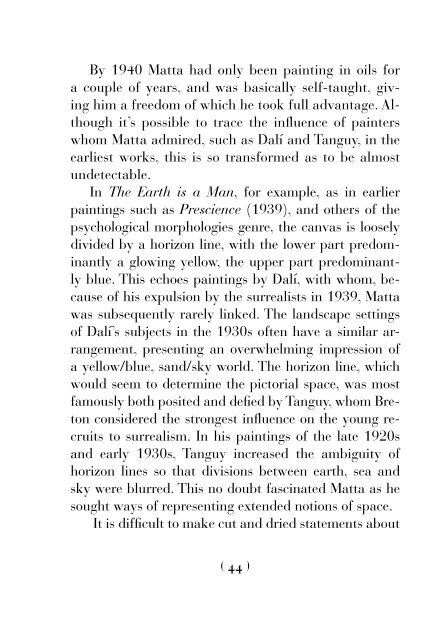Matta-Duchamp
Illustrated catalog featuring full page color illustrations and rare documentary photographs. Published by Galerie Gmurzynska in June 2018 to accompany a special cabinet exhibition at Art Basel 2018. The book includes texts by Professor Dawn Adès and Norman Rosenthal. It coincides with a broader re-evaluation of the importance of Matta internationally as well as of the influence of Duchamp on the work of 20th century artists. Edited and introduced by Krystyna Gmurzynska and Mathias Rastorfer. Essays by Dawn Adès and Norman Rosenthal. Historic interview excerpt by Robert Motherwell. 90 pages with 7 illustrations. Softcover. ISBN: 978-3-905792-09-6
Illustrated catalog featuring full page color illustrations and rare documentary photographs.
Published by Galerie Gmurzynska in June 2018 to accompany a special cabinet exhibition at Art Basel 2018. The book includes texts by Professor Dawn Adès and Norman Rosenthal. It coincides with a broader re-evaluation of the importance of Matta internationally as well as of the influence of Duchamp on the work of 20th century artists.
Edited and introduced by Krystyna Gmurzynska and Mathias Rastorfer.
Essays by Dawn Adès and Norman Rosenthal.
Historic interview excerpt by Robert Motherwell.
90 pages with 7 illustrations.
Softcover.
ISBN:
978-3-905792-09-6
You also want an ePaper? Increase the reach of your titles
YUMPU automatically turns print PDFs into web optimized ePapers that Google loves.
By 1940 <strong>Matta</strong> had only been painting in oils for<br />
a couple of years, and was basically self-taught, giving<br />
him a freedom of which he took full advantage. Although<br />
it’s possible to trace the influence of painters<br />
whom <strong>Matta</strong> admired, such as Dalí and Tanguy, in the<br />
earliest works, this is so transformed as to be almost<br />
undetectable.<br />
In The Earth is a Man, for example, as in earlier<br />
paintings such as Prescience (1939), and others of the<br />
psychological morphologies genre, the canvas is loosely<br />
divided by a horizon line, with the lower part predominantly<br />
a glowing yellow, the upper part predominantly<br />
blue. This echoes paintings by Dalí, with whom, because<br />
of his expulsion by the surrealists in 1939, <strong>Matta</strong><br />
was subsequently rarely linked. The landscape settings<br />
of Dalí’s subjects in the 1930s often have a similar arrangement,<br />
presenting an overwhelming impression of<br />
a yellow/blue, sand/sky world. The horizon line, which<br />
would seem to determine the pictorial space, was most<br />
famously both posited and defied by Tanguy, whom Breton<br />
considered the strongest influence on the young recruits<br />
to surrealism. In his paintings of the late 1920s<br />
and early 1930s, Tanguy increased the ambiguity of<br />
horizon lines so that divisions between earth, sea and<br />
sky were blurred. This no doubt fascinated <strong>Matta</strong> as he<br />
sought ways of representing extended notions of space.<br />
It is difficult to make cut and dried statements about<br />
( 44 )

















